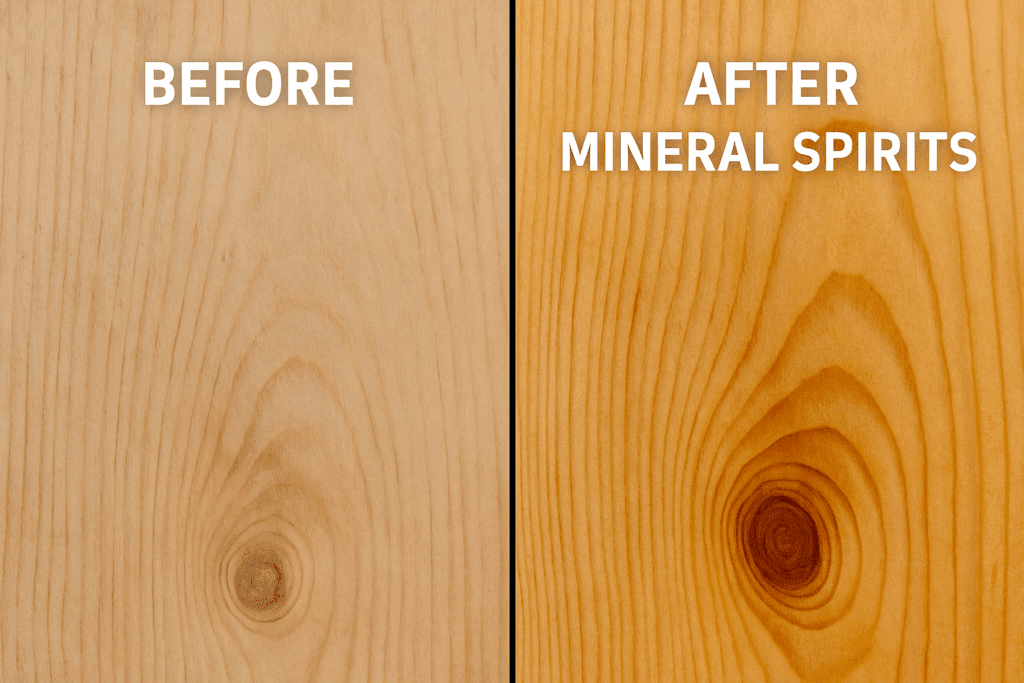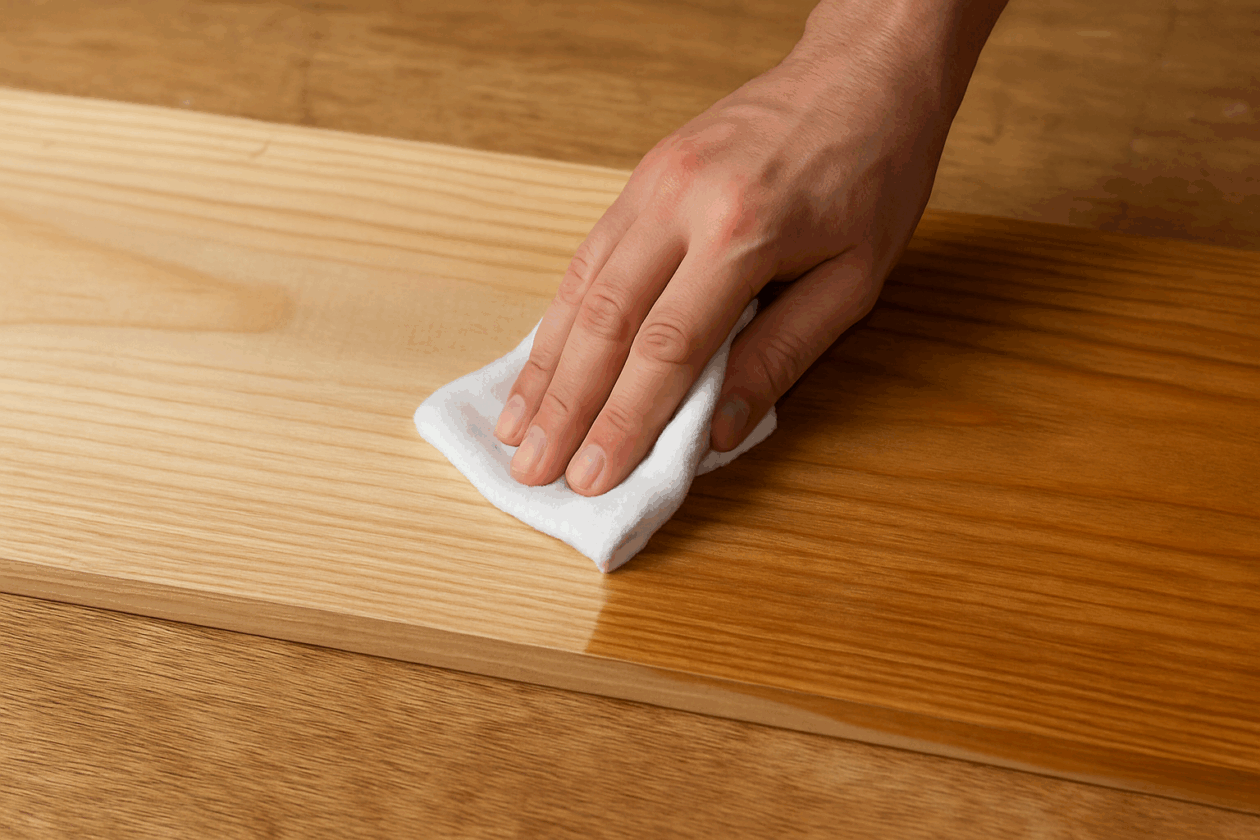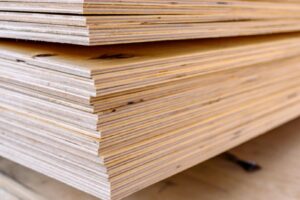.
Looking to clean old wood or prepare it for stain? Mineral spirits offer an easy, safe, and effective method for refreshing wood without damage. Whether you’re restoring vintage furniture or prepping trim for stain, this guide will show you how to use mineral spirits step-by-step—and why they’ve been trusted by generations of woodworkers.
Key Takeaways
- Use it to lift dirt, residue, and wax while preserving the wood’s grain.
- Always ventilate your work area and wear gloves and safety goggles.
- Dispose of solvents safely and clean your tools to extend their life.
Why Mineral Spirits Are Woodworker-Approved
Unlike harsh chemicals, mineral spirits clean wood without swelling fibers or damaging its surface. They’re ideal for projects involving antique restoration, pre-stain prep, or even thinning oil-based finishes. For woodworking enthusiasts, mineral spirits remain one of the most versatile shop staples.
Check out our guide to the best plywood for cabinets to match your project with the right materials.
What Are Mineral Spirits?
Also called paint thinner or white spirits, this petroleum-based solvent breaks down oil-based products, polishes away grime, and preps the surface for finishing—all without raising the grain. Because of its milder nature compared to acetone or turpentine, it’s commonly used by furniture refinishers and DIYers.
Need ideas for stain options? Browse our top-tested picks for natural wood stains.
How to Use Mineral Spirits on Wood

- Work in a ventilated area—open windows or run a fan.
- Wear nitrile gloves, goggles, and a mask.
- Pour a small amount of spirits on a lint-free cloth.
- Wipe the wood following the grain.
- Let the wood air dry for 20–30 minutes.
What You’ll Need
- Sunnyside Pure Odorless
- Microfiber Shop Towels
- 3M Safety Goggles
- Nitrile Gloves
- 0000 Steel Wool Pads (optional)
Preparing for a Flawless Stain
After sanding, a wipe-down with mineral spirits removes dust and reveals how the stain will absorb. This helps prevent streaks or uneven finishes. Try a test on scrap wood to visualize the final look.
Mineral Spirits vs. Other Solvents
| Solvent | Best Use | Strength | Notes |
|---|---|---|---|
| Mineral Spirits | General wood cleaning | Mild | Won’t raise wood grain |
| Denatured Alcohol | Dewaxing, shellac cleaning | Medium | Quick-drying |
| Acetone | Heavy degreasing/stripping | Strong | Can damage wood |
When to Use Mineral Spirits
- Stripping surface residue
- Removing old wax buildup
- Prepping wood for stain
- Light antique furniture cleaning
Safety Guidelines
- Always ventilate your workspace
- Avoid open flames or sparks
- Wear proper protective gear
- Store chemicals safely and label them
How to Dispose of Used Mineral Spirits
- Small amounts: Mix with cat litter and dispose per local rules
- Large quantities: Bring to a hazardous waste facility
Follow EPA best practices here.
Restoring Tools After Use
Let spirits settle in a jar, skim and reuse the clear portion. Clean your brushes with mild soap and warm water. Air dry away from heat sources.
Revealing the Grain

Mineral spirits act like a temporary finish—they show you how the wood will look once sealed. You’ll see grain definition, sanding flaws, and glue spots more clearly. That lets you make corrections before you commit to staining.
Want your plywood to look like premium oak? Here’s how.
Antique Care Tips
Use a soft cloth lightly moistened with mineral spirits to clean fragile vintage wood. Never soak the wood—just a light wipe goes a long way. Spot test first if you’re unsure how the finish will react.
Advanced Uses in Wood Refinishing
Mineral spirits are not just for prep—they’re a final checkpoint. Use them to:
- Spot unseen glue residue
- Highlight surface scratches
- Test stain reactions
Use a fine sanding pad to correct any revealed defects before finishing.
Choosing a Finish Post-Cleaning
After wiping with mineral spirits and allowing time to dry, you’re ready to apply a finish. For protection, use oil-based polyurethane. For natural aesthetics, tung oil or Danish oil works well.
Avoid rushing into water-based finishes—make sure the surface is dry. If needed, re-wipe with a clean cloth.
Want to give plywood a paint-ready surface? Read our painted plywood floor tutorial.
Additional Tips for Better Wood Finishing Results
If you’re applying stain after using mineral spirits, consider using a wood conditioner on softer woods like pine or birch. This helps even out stain absorption and prevents blotchy results. Many professionals recommend applying conditioner after the mineral spirits have fully dried and evaporated. If you’re working in a dry climate, give it an extra hour to ensure a clean surface.
You can also use mineral spirits to thin down thick oil-based finishes. This is especially helpful when applying finishes with a brush, as it minimizes streaking and brush marks. Just make sure to mix slowly and thoroughly to avoid bubbles.
Common Mistakes to Avoid
One common mistake is oversaturating your cloth or applying too much solvent to the wood. A little goes a long way—damp, not wet, is the rule. Another is skipping ventilation. Even odorless mineral spirits can be harmful in enclosed spaces.
Another error is applying stain too soon after wiping. Even if the surface feels dry, residual spirits can affect how the stain adheres. When in doubt, do a quick re-wipe with a dry cloth or wait another 15–30 minutes.
Finally, never store used rags without proper ventilation. They can self-ignite. Lay them flat outdoors or soak them in water in a sealed metal container until ready for disposal.
Summary
Mineral spirits are an affordable, effective wood prep tool. They clean surfaces, reveal flaws, and ensure stains and finishes bond well. With the right safety practices, this solvent makes your woodworking smoother and your finishes more beautiful.
FAQs
Can I use mineral spirits on any wood?
Yes, they’re safe for most hardwoods and softwoods.
How should I throw away leftover solvent?
For small amounts, solidify with absorbent material. Large quantities go to hazardous waste collection.
Are they safe for antiques?
Yes—just apply gently with a cloth and don’t overdo it.
Do they delay drying time for finishes?
They can, especially if you don’t allow full evaporation.
What gear should I wear?
Gloves, mask, goggles—and work in fresh air.




